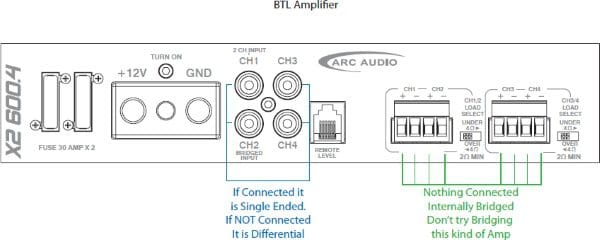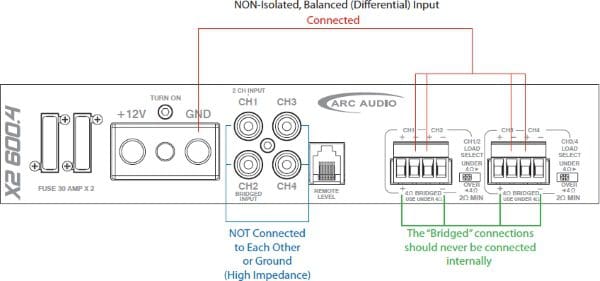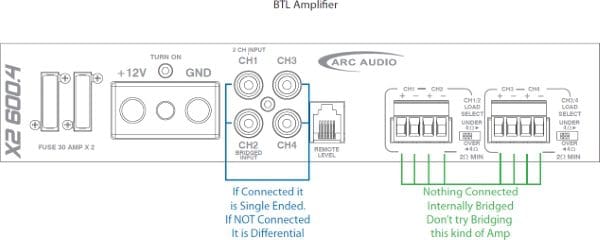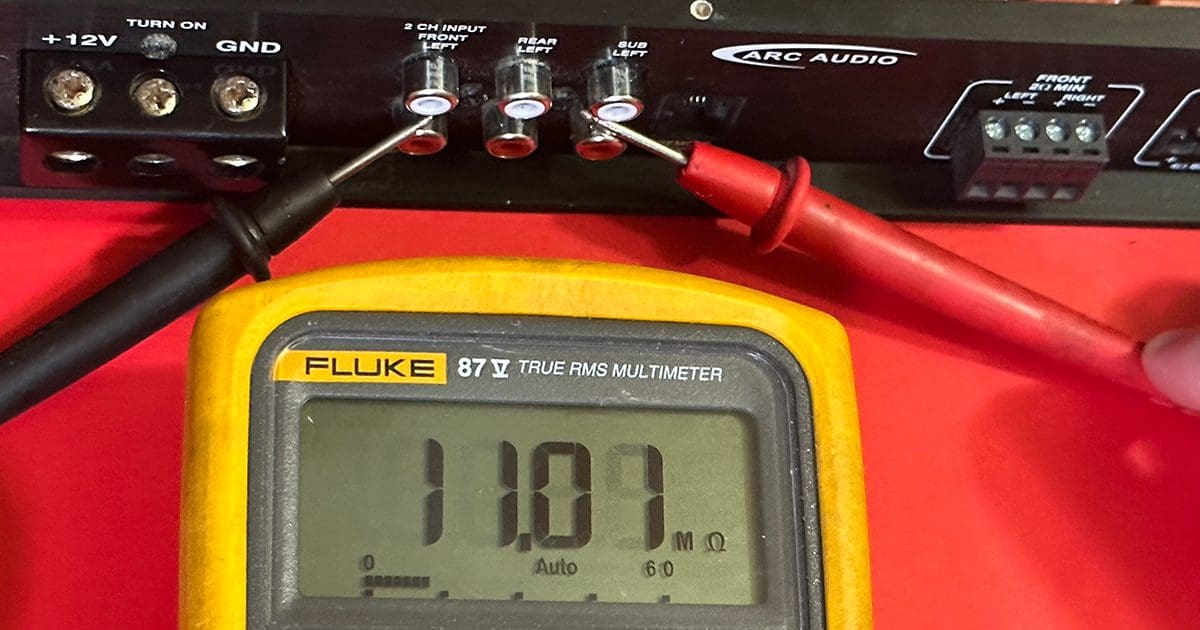We recently published an article that explains how differential inputs on car audio amplifiers and signal processors work. Just after that was published, we were talking with Brad Ott, executive vice president of operations at ARC Audio. He has an extensive background in circuit design and was the company’s product development manager for many years. Brad offered to send us several diagrams outlining three popular car audio amplifier RCA input configurations. Of course, we accepted his generous offer. Consider this an information upgrade to our original article on measuring differential inputs.
Type 1: Isolated Single-Ended Input
The first amplifier configuration we’ll discuss is called an isolated single-ended input design. This design is an example of an amplifier that does NOT have differential inputs. As we outlined in the previous article, the installer should use coaxial RCA interconnect cables to minimize the chances of noise entering the system.

If you look at the drawing above, the example amplifier would have the shields on all four RCA input jacks connected together. Additionally, those shields would be connected to the common speaker output terminals. All of these connections would be referenced to the amplifier ground terminal through a resistor with a value between 1,000 and 10,000 ohms.
To determine if your amplifier uses this circuitry, start by measuring the resistance between the shields of the RCA jacks. If there is minimum resistance, then the amplifier definitely does NOT have differential inputs.
The second step is to measure the resistance between the RCA shields and the amplifier ground connection. If there is a relatively high impedance (1k to 10k ohms), then it’s an isolated design. On the other hand, if there is minimal resistance between the RCA shields and the amplifier ground, then it’s non-isolated, and you are begging for noise problems by including this amplifier in your car audio system.
Type 2: Non-Isolated, Differential Inputs
The second common car audio amplifier design has differential inputs and a non-isolated output stage design. This type of amplifier is unlikely to pick up noise from the interconnect cables as any signal common to the shield and center pin of each input are effectively removed from the amplified signal.

To measure your amplifier to see if it has differential inputs, check for resistance between the RCA shields on any two channels. If the circuit is open (presenting a high impedance), it likely has differential inputs. You can also check that the RCA shields are not referenced to the amplifier ground connection or the common terminals of the speaker outputs.
In a non-isolated amp design, the common terminals of the speaker outputs will be referenced to the ground terminal in the power connection block with minimal to no resistance.
Type 3: Bridge-Tied Load Amplifier
Some amplifiers operate in a bridge-tied load configuration. The little amplifier IC used in car radios is an example of this. When no audio signal is being produced, both terminals will be at the same potential. This might be a voltage close to the ground voltage of the amp, or it could be halfway between the ground reference and the positive rail voltage of the power supply for the output stage. The key consideration in this design is that the amplifier cannot be bridged or strapped.

If you want to know whether your amplifier uses a BTL output device configuration, measure the resistance between all the speaker terminals. None should be connected to any other. While this design works fine for driving high-frequency speakers, its power can’t be increased by bridging to run a single-voice coil subwoofer, which limits its suitability and value in some car audio system designs.
A BTL amplifier can have a single-ended or balanced input design. That choice isn’t in any way related to the output device configuration. As such, if you want to know if the amplifier has differential inputs, measure the resistance between the shields of the RCA input jacks. If there is no connection, it’s balanced, and you’re good to go. If there is a low resistance, put it back on the shelf and keep shopping.
Better Equipment Design Helps Prevent Headaches
Whether you choose a premium car audio amplifier with differential inputs or try to save a few bucks with a single-ended design is up to you. If you look at respected companies like ARC Audio, Rockford Fosgate, Sony, Audison and Hertz, all of which are supporters of BestCarAudio.com, then you’ll note that the vast majority of their amplifier and processor designs use differential input circuitry.
We think you’ll find that most installers would rather you spend a bit more on the amplifiers for your sound system rather than you having to pay them to troubleshoot and hopefully eliminate noise from the audio system. If you’re looking for a reputable mobile enhancement retailer, check out the Dealer Locator at BestCarAudio.com.

